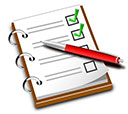Медиа, культура и популярная геополитика:
как создаются воображаемые пространства и идентичности
Балакина Ю. В.,
Кандидат филологических наук, Национальный исследовательский университет “Высшая школа экономики”, Нижний Новгород, Россия, julianaumova@gmail.com
elibrary_id: 758525 | ORCID: 0000-0002-4942-5953 | RESEARCHER_ID: O-8009-2014
Морозова Н. Н.,
Кандидат политических наук, Национальный исследовательский университет “Высшая школа экономики”, Нижний Новгород, Россия, nnmorozova@hse.ru
elibrary_id: 826086 | ORCID: 0000-0002-5054-1644 |
Радина Н. К.,
Доктор политических наук, Институт международных отношений и мировой истории, Национальный исследовательский Нижегородский государственный университет им. Н.И. Лобачевского, Нижний Новгород, Россия, rasv@yandex.ru
elibrary_id: 417954 | ORCID: 0000-0001-8336-1044 | RESEARCHER_ID: L-6641-2015
Дата поступления статьи: 2024.04.01. Принята к печати: 2024.06.24

DOI: 10.17976/jpps/2024.06.04
EDN: MPRZLG
Балакина Ю. В., Морозова Н. Н., Радина Н. К. Медиа, культура и популярная геополитика: как создаются воображаемые пространства и идентичности. – Полис. Политические исследования. 2024. № 6. С. 40-53. https://doi.org/10.17976/jpps/2024.06.04. EDN: MPRZLG
В статье проводится обзор истории возникновения, современного состояния и перспектив нового теоретического поля критической геополитики — популярной геополитики. Цель работы — систематизировать ключевые идеи популярной геополитики, показать ее возможности для осмысления, прогнозирования и моделирования актуальных геополитических процессов. В сфере интересов популярной геополитики находятся геополитические нарративы, отраженные в образах и опредмеченные в продуктах массовой культуры. Именно через последние происходит межкультурное взаимодействие эпохи глобализации. В рамках данного процесса культурное “иное” маркируется как “чужое”/“чуждое” или, наоборот, способствует “перенастройке” оценочных и смысловых регистров зрителя/потребителя через превращение культурно привлекательных “чужих” в “своих”. При этом геополитические нарративы четко разграничивают “своих” и “чужих”, помещая их на противоположные траектории развития, символизирующие прогресс или отсталость, возвышение или упадок, расширение влияния или изоляцию. Авторы доказывают, что в исследовании популярной геополитики наиболее продуктивен трансмедийный подход. С одной стороны, он позволяет подробно проанализировать все богатство смыслов, создаваемых и транслируемых в социальных сетях и онлайн-медиа с помощью современных визуальных и виртуальных каналов коммуникации. С другой стороны, с его помощью можно в полной мере оценить вклад разработчиков и потребителей в производство нарративов, а также исследовать способы восприятия официальных геополитических нарративов как домашней, так и внешней аудиторией. Реализовать идею междисциплинарности популярной геополитики поможет комплексная методология на основе качественных и автоматизированных количественных методов сбора и анализа контента. Авторы приходят к выводу, что теоретическое поле популярной геополитики информативно и востребовано с точки зрения обновления теоретического поля политической науки в целом. Практическая же значимость популярной геополитики лежит в области активного моделирования социальной реальности: она помогает представителям российской практической геополитики успешно создавать национальный “воображаемый мир”, способный в диалоге противостоять транснациональным нарративам.
Список литературы
Балакина Ю.В. 2023. Образ “врага” и нейтралитет в китайских карикатурах. Полис. Политические исследования. № 4. С. 89-104. https://doi.org/10.17976/jpps/2023.04.07. EDN: YMWVLA.
Виноградова Н.С. 2019. Образ России в российском телеэфире (исследование 2017-2019 гг.). Вестник Российского университета дружбы народов. Серия: Политология. Т. 21. № 3. С. 397-408. https://doi.org/10.22363/2313-1438-2019-21-3-397-408. EDN: WCCEEP.
Дунас Д.В., Бабына Д.А., Бойко О.А., Сидоров Е.А. 2023. Информационная повестка дня “цифровой молодежи” в фокусе медиагеографии (на примере “ВКонтакте” и Telegram). Меди@льманах. № 2. С. 44-52. https://doi.org/10.30547/mediaalmanah.2.2023.4452. EDN: RTWCCI.
Костров А.В. 2017. Белое солнце геополитики. Новый исторический вестник. № 1. С. 152-165. EDN: YQRBYR.
Радина Н.К. 2021. “Воображаемая геополитика” в российском медийном дискурсе о коронавирусе. Полис. Политические исследования. № 1. С. 110-124. https://doi.org/10.17976/jpps/2021.01.08. EDN: RJXOVR.
Радина Н.К. 2022. Мультимодальные медийные инструменты популярной геополитики: российская политика в карикатурах зарубежных СМИ. Вестник МГИМО-Университета. Т. 15. № 4. С. 23-43. https://doi.org/10.24833/2071-8160-2022-4-85-130-150. EDN: CQHOWC.
Хэ Н. 2023. Имидж Китая в российских массмедиа в контексте инициативы “Один пояс - один путь” (по материалам телеканала “Россия 24”). Меди@льманах. № 2. С. 80-87. https://doi.org/10.30547/mediaalmanah.2.2023.8087. EDN: HFWBUY.
Шульгина Д.Н. 2010. Кризис культуры и идентичности человека в условиях глобализации. Вестник Воронежского государственного университета. Серия: Философия. № 2. С. 173-180. EDN: NUNGCP
Aistrope, T. (2020). Popular culture, the body and world politics. European Journal of International Relations, 26(1), 163-186. https://doi.org/10.1177/1354066119851849
Bos, D. (2018). Answering the Call of Duty: everyday encounters with the popular geopolitics of military-themed videogames. Political Geography, 63, 54-64. https://doi.org/10.1016/j.polgeo.2018.01.001
Bos, D. (2021). Nationalism, popular culture and the media. In P.C. Adams, & B. Warf (Ed.), Routledge Handbook of Media Geographies (pp. 220-21). London: Routledge. https://doi.org/10.4324/9781003039068-17
Bos, D. (2023). Playful encounters: games for geopolitical change. Geopolitics, 28(3), 1210-1234. https://doi.org/10.1080/14650045.2021.2002846
Dallabona, A. (2014). Narratives of Italian craftsmanship and the luxury fashion industry: representations of Italianicity in discourses of production. In J.H. Hancock II, G. Muratovski, V. Manlow, & A. Peirson- Smith (Ed.), Global Fashion Brands: Style, Luxury and History (pp. 215-228). Bristol: Intellect. https://doi.org/10.1386/gfb.1.1.215_1
Dinicu, A., & Iancu, D. (2021). Popular geopolitics and the ideological use of sports. International Conference knowledge-based organization, 27(1), 26-32. https://doi.org/10.2478/kbo-2021-0005
Dittmer, J. (2018). The origins and evolution of popular geopolitics: an interview with Jo Sharp and Klaus Dodds. In R.A. Saunders, & V. Strukov (Ed.), Popular Geopolitics: Plotting an Evolving /nterdiscipline (pp. 23-42). London: Routledge. https://doi.org/10.4324/9781351205030-2
Dittmer, J., & Bos, D. (2019). Popular culture, geopolitics, and identity. Lanham: Rowman & Littlefield.
Dodds, K. (2005). Screening geopolitics: James Bond and the early Cold War films (1962-1967). Geopolitics, 10(2), 266-289. https://doi.org/10.1080/14650040590946584
Dodds, K. (2006). Popular geopolitics and audience dispositions: James Bond and the Internet Movie Database (IMDB). Transactions ofthe Institute of British Geographers, 31(2), 116-130. https://doi.org/10.1111/j.1475-5661.2006.00199.x
Dodds, K. (2007). Geopolitics: a very short introduction. Oxford: Oxford University Press. https://doi.org/10.1093/actrade/9780199676781.001.0001
Funnel, L. & Dodds, K. (2017). Geographies, genders and geopolitics of James Bond. London: Palgrave Macmillan. https://doi.org/10.1057/978-1-137-57024-6
Ghourchi, M., & Mosaviyan, S.S. (2021). The role of Hollywood Cinema in geopolitical representation of the Middle East. Geopolitics Quarterly, 16(4), 10-35.
Grincheva, N., & Stainforth, E. (2023). Geopolitics of digital heritage. Cambridge: Cambridge University Press. https://doi.org/10.1017/9781009182072
Inglis, D. (2009). Globalization and food: the dialectics of globality and locality. In B.S. Turner (Ed.), The Routledge International Handbook of Globalization Studies (pp. 492-513). London: Routledge.
Jarvis, L., & Robinson, N. (2024). Oh help! Oh no! The international politics of The Gruffalo: children's picturebooks and world politics. Review of International Studies, 50(1), 58-78. https://doi.org/10.1017/S0260210523000098
Jenkins, H. (2006). Convergence culture: where old and new media collide. New York: New York University Press.
Kim, M. (2022). The growth of South Korean soft power and its geopolitical implications. Journal of Indo-Pacific Affairs, 5(6), 123-138.
Kinder, M. (1991). Playing with power in movies, television, and video games: from Muppet Babies to Teenage Mutant Ninja Turtles. Berkeley: University of California Press. https://doi.org/10.1525/9780520912434
Klastrup, L., & Tosca, S. (2004). Transmedial worlds - rethinking cyberworld design. Proceedings of the International Conference on Cyberworlds (pp. 409-416). Tokyo. https://doi.org/10.1109/CW.2004.67
Levisen, C., & Ferndndez, S.S. (2021). Words, people and place: linguistics meets popular geopolitics. Journal of Postcolonial Linguistics, 5, 1-11. https://iacpl.net/jopol/issues/journal-of-postcolonial-linguis-tics-52021/words-people-and-place/
Ling, W., & Segre Reinach, S. (2019). Fashion-making and co-creation in the transglobal landscape: Sino-Italian fashion as method. Modern Italy, 24(4), 401-415. https://doi.org/10.1017/mit.2019.59
Macala, J. (2020). China in the geopolitical imaginations of the Polish pop music after 1989. Polish Political Science Yearbook, 49(4), 37-47. https://doi.org/10.15804/ppsy2020403
Mostafanezhad, M., Coates, J. & Coates, J. (2018). Journeys from the east: the popular geopolitics of film motivated Chinese tourism. International Journal of Tourism Anthropology, 6(3), 219-236. https://doi.org/10.1504/IJTA.2018.093304
Mountz, A. (2009). Nationalism. In C. Gallaher, C.T. Dahlman, M. Gilmartin, A. Mountz, & P. Shirlow (Ed.), Key Concepts in Political Geography (pp. 277-287). Los Angeles: Sage. https://doi.org/10.4135/9781446279496.n30
Nashef, H.A.M. (2021). “The right to narrate”: Gazans contest popular geopolitics with film. Journal of Postcolonial Writing, 57(6), 752-765. https://doi.org/10.1080/17449855.2021.1963311
Nexon, D.H., & Neumann, I.B. (Ed.). (2006). Harry Potter and international relations. Lanham: Rowman and Littlefield.
О Tuathail, G. (1994). (Dis)placing geopolitics: writing on the maps of global politics. Environment and Planning D: Society and Space, 12, 525-546.
О. Tuathail, G. (1996). Critical geopolitics: the politics of writing global space. London: Routledge.
Pfoser, A., & Yusupova, G. (2022). Memory and the everyday geopolitics of tourism: reworking post-imperial relations in Russian tourism to the ‘near abroad. Annals of Tourism Research, 95. https://doi.org/10.1016/j.annals.2022.103437
Potwarka, L.R., & Banyai, M. (2016). Autonomous agents and destination image formation of an Olympic host city: the case of Sochi 2014. Journal of Hospitality Marketing & Management, 25(2), 238-258. https://doi.org/10.1080/19368623.2014.1002146
Ratilainen, S. (2020). Norway reimagined: popular geopolitics and the Russophone fans of Skam. Nordicom Review, 41, 139-153. https://doi.org/10.2478/nor-2020-0016
Riabov, D., & Riabov, O. (2019). “Masha and the Bear” in the context of the new Cold War: the question of the role of cinema in symbolic politics. In I.V. Chelysheva (Ed.), The Current State of Media Education in Russia through the Prism of Global Trends (pp. 183-188). Rostov-on-Don: Rostov State Economics University.
Rowen, I. (2023). Booking engines as battlefields: contesting technology, travel, and territory in Taiwan and China. Geopolitics, 28(4), 1489-1505. https://doi.org/10.1080/14650045.2022.2027914
Saunders, R.A. (2017). Popular geopolitics and nation branding in the post-Soviet realm. London; New York: Routledge. https://doi.org/10.4324/9781315737386
Saunders, R.A., & Strukov, V. (Ed.). (2018). Popular geopolitics: plotting an evolving interdiscipline. London: Routledge. https://doi.org/10.4324/9781351205030
Saxena, C. (2022). Re/presenting Afghans in Hindi cinema: the popular geopolitics of India-Afghanistan relations. Space and Polity, 26(3), 145-164. https://doi.org/10.1080/13562576.2022.2138311
Sharp, J.P. (1993). Publishing American identity: popular geopolitics, myth and The Reader's Digest. Political Geography, 12(6), 491-503. https://doi.org/10.1016/0962-6298(93)90001-N
Sharp, J.P. (1998). Reel geographies of the new world order: patriotism, masculinity, and geopolitics in post-Cold War American movies. In G. О Tuathail, & S. Dalby (Ed.), Rethinking Geopolitics (pp. 152-169). London; New York: Routledge. https://doi.org/10.4324/9780203058053
Shim, D. (2017). Sketching geopolitics: comics and the case of the Cheonan sinking. International Political Sociology, 11(4), 398-417. https://doi.org/10.1093/ips/olx016
Stenberg, G. (2006). Conceptual and perceptual factors in the picture superiority effect. European Journal of Cognitive Psychology, 18(6), 813-847. https://doi.org/10.1080/09541440500412361
Tenneriello, S. (2019). Staging Sochi 2014: the soft power of geocultural politics in the Olympic opening ceremony. /heatre Research International, 44(1), 23-39. https://doi.org/10.1017/S0307883318000822
Terry, G.S. (2023). Downstream Influence in the Russo-Ukrainian war: grand strategy war gaming as a novel approach to influence operations. Journal of Baltic Security, 29(1), 98-120. https://doi.org/10.57767/jobs_2023_004
Wang, N. (2013). The currency of fantasy: discourses of popular culture in International Relations. International Studies. Interdisciplinary Political and Cultural Journal, 15(1), 21-33. https://doi.org/10.2478/ipcj-2013-0002
Watson, A. (2024). The production of ‘From Our Own Correspondent' on BBC Radio 4: a popular geopolitical analysis. AREA, 56(2). https://doi.org/10.1111/area.12918
Woodyer, T., & Carter, S. (2018). Domesticating the geopolitical: rethinking popular geopolitics through play. Geopolitics, 25(5), 1050-1074. https://doi.org/10.1080/14650045.2018.1527769
Zorko, M., & Srsen, D. (2020). From a critique to self-evolving (inter) discipline: critical geopolitics vs. popular geopolitics. Medjunarodni problemi, 72(1), 158-178. https://doi.org/10.2298/MEDJP2001158Z
Zorko, M., Jakopovid, H., & Cesarec, I. (2021). The image of geolocations in a virtual environment: the case studies of Indonesia and Croatia on Google Trends. Politicka misao: casopis za politologiju, 58(2), 160-183. https://doi.org/10.20901/pm.58.2.07
Возможно, Вас заинтересуют:
Исаев Б. А.,
Геополитика классическая и геополитика современная. – Полис. Политические исследования. 2011. №2
Радина Н. К.,
“Воображаемая геополитика” в российском медийном дискурсе о коронавирусе. – Полис. Политические исследования. 2021. №1
Алексеева Т. А.,
Стратегическая культура: эволюция концепции. – Полис. Политические исследования. 2012. №5
Цымбурский В. Л.,
Speak, memory! (Фрагменты из авторского Введения в подготовленную к публикации книгу «Конъюнктуры Земли и Времени»). – Полис. Политические исследования. 2011. №2
Сорокин К. Э.,
Геополитика современного мира и Россия . – Полис. Политические исследования. 1995. №1




.jpg)






 версия для печати
версия для печати
.jpg)
.jpg)